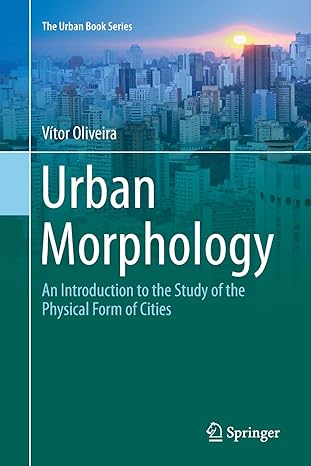Exercise 8.3Urban Morphology and Heritage Tourism This last exercise addresses the relation between urban morphology and heritage
Question:
Exercise 8.3—Urban Morphology and Heritage Tourism This last exercise addresses the relation between urban morphology and heritage tourism, focusing on the conservation of urban form. The student should concentrate on the historical centre of his city, as this is usually the area under the greatest pressure of heritage tourism. The exercise is in two parts. In the first part, the student should reflect on the heritage tourism’s pressure on his city. He should then offer a physical characterisation (streets, street blocks, plots, and buildings) of the historical kernel, identifying the main strengths, weaknesses, opportunities, and threats raised by heritage tourism. In the second part, the student should briefly outline a conservation policy, defining what should be preserved and what can be transformed
(as explored in previous exercises), bearing in mind the goal of offering tourists an authentic experience, while at the same time assuring the needs and aspirations of residents and workers. The exercise should be prepared as homework and presented in classes. The PowerPoint presentation (5–10 min) should include the characterisation of the historical area and the main aspects of the conservation policy. The PowerPoint presentation can be supported by text, drawings, and photographs.
Step by Step Answer:

Urban Morphology An Introduction To The Study Of The Physical Form Of Cities
ISBN: 287081
2nd Edition
Authors: Vitor Oliveira






